Mise-en-scène: analysis of a sequence from FROM RUSSIA WITH LOVE (Terence Young, 1963)
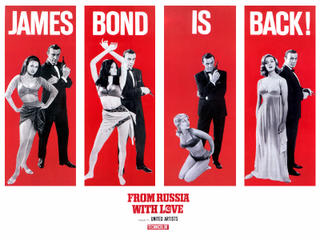
Watch the fight that takes place on the Orient Express between James Bond (Sean Connery) and Donald 'Red' Grant (Robert Shaw) in Terence Young's From Russia With Love (1963).
What does the mise-en-scène tell us about the narrative and characters?
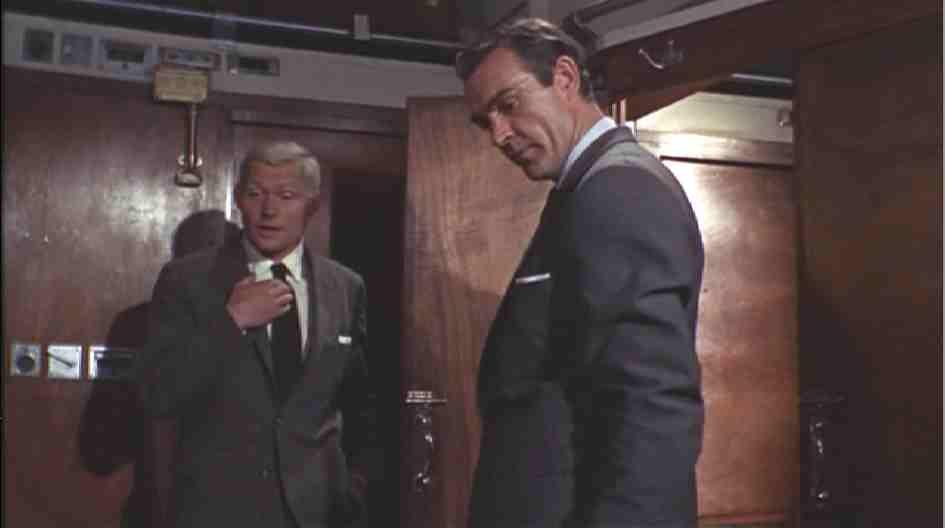 James Bond (Sean Connery) and Donald Grant (Robert Shaw) share similar dress.
James Bond (Sean Connery) and Donald Grant (Robert Shaw) share similar dress.This connotes similarity between the characters, suggesting that the two men are ‘equals’ (making the subsequent fight more evenly-matched, and therefore suspenseful).
The (formal) suits and ties act as an index of professionalism; the costumes tell us the two men are experts in their particular field.
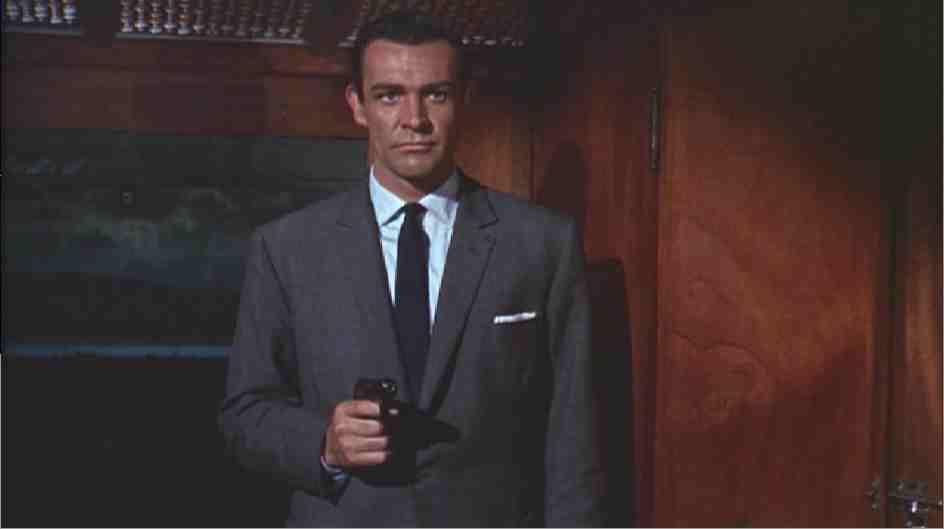
Props (Weapons):
Guns act as symbols of violence.
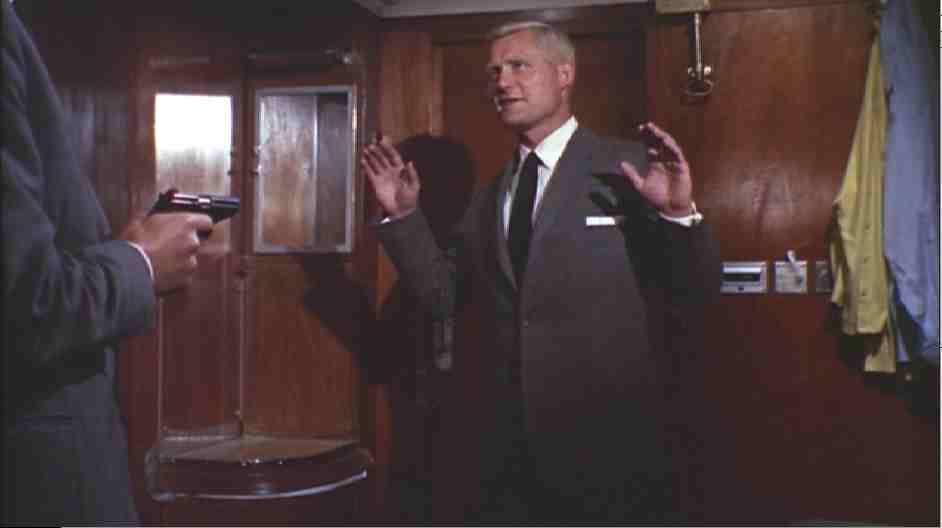 At the beginning, Bond holds a gun on Grant; later, Grant holds a gun on Bond.
At the beginning, Bond holds a gun on Grant; later, Grant holds a gun on Bond.
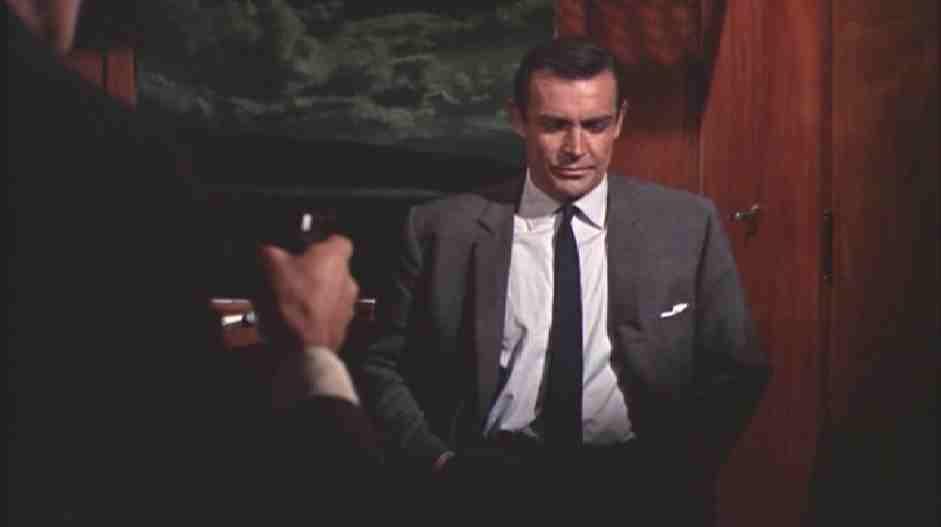 This ‘switching’ of the prop between characters acts as an index of the shifting power balance between Bond and Grant, again reinforcing their status as ‘equals’.
This ‘switching’ of the prop between characters acts as an index of the shifting power balance between Bond and Grant, again reinforcing their status as ‘equals’.
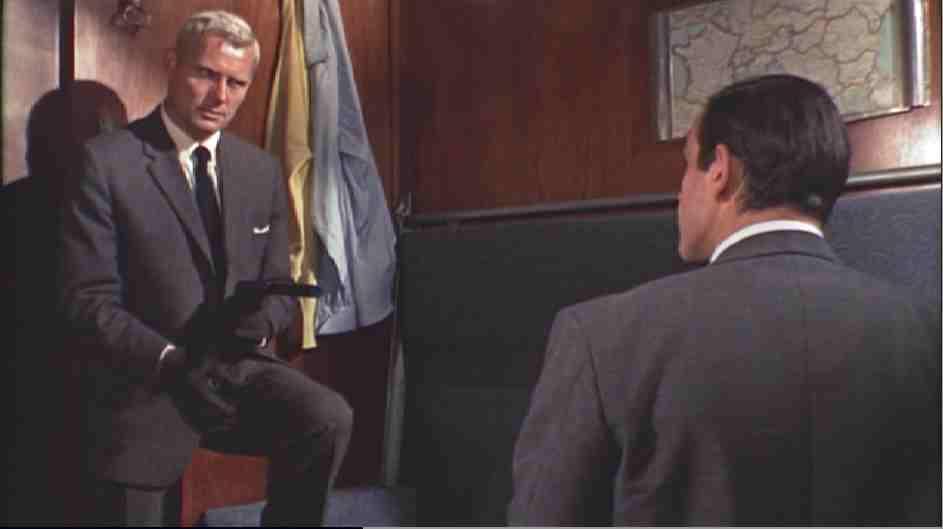
Other Props:
Bond’s briefcase contains gold coins given to him by Q; these act as an index of the wealth of the British Government (for whom Bond works).
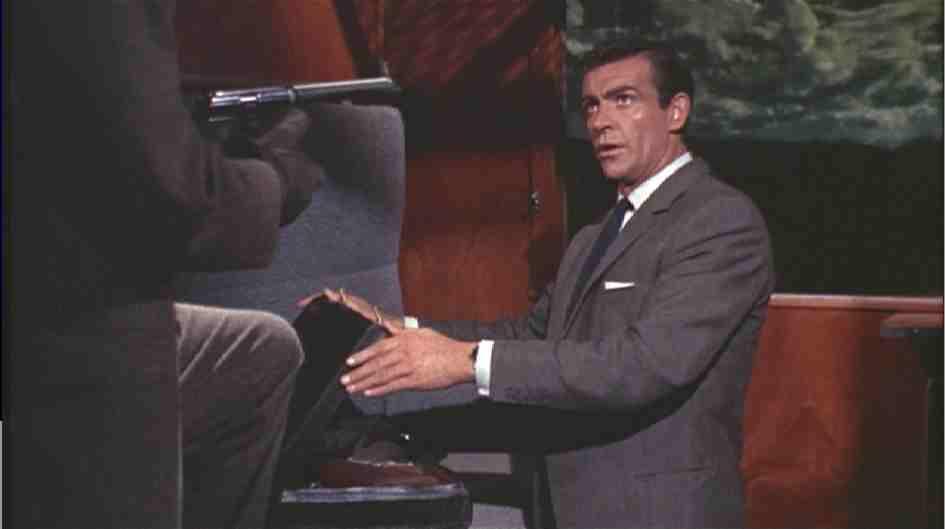 We should recognise the set as the interior of a train compartment.
We should recognise the set as the interior of a train compartment.
The map on the wall behind Bond indicates that the train journey takes place on the continent of Europe (and not, for example, in America).
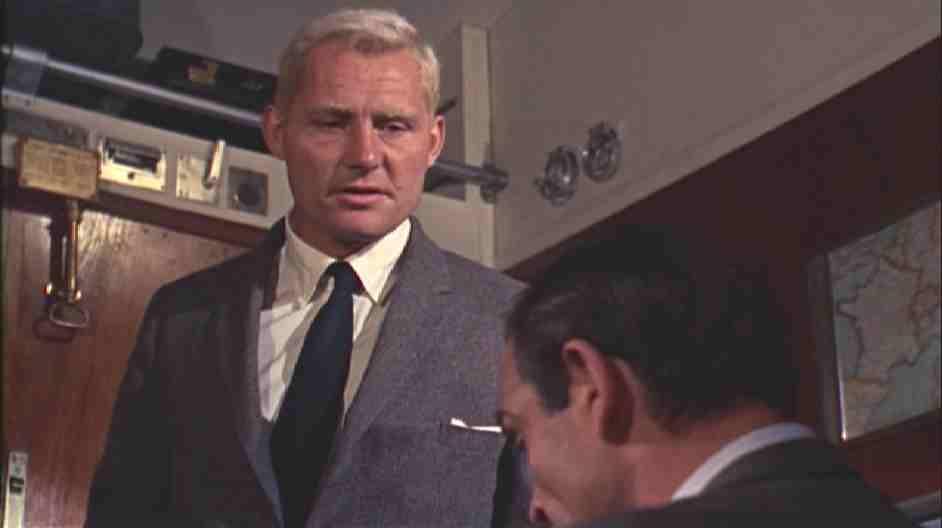 When Grant puts on his gloves, we know that he means to harm Bond; the gloves act as an index of his intention to harm Bond.
When Grant puts on his gloves, we know that he means to harm Bond; the gloves act as an index of his intention to harm Bond.
Space and Lighting:
Director Terence Young stated that the closed confines of the train compartment made the fight seem more ‘intimate’ and more violent (commentary, 2001 DVD release).
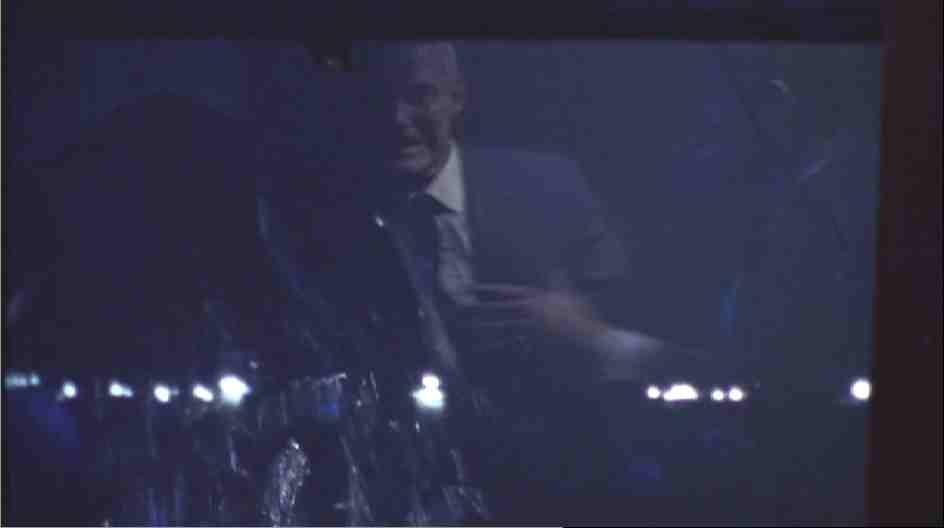 The absence of light during the fight scene connotes danger (and is associated with horror movies).
The absence of light during the fight scene connotes danger (and is associated with horror movies).
 The blue ‘tint’ would usually connote tranquility, but here acts as an index of nighttime (the setting of the sequence).
The blue ‘tint’ would usually connote tranquility, but here acts as an index of nighttime (the setting of the sequence).
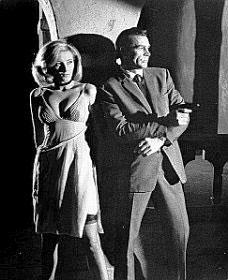
 At the beginning, Bond holds a gun on Grant; later, Grant holds a gun on Bond.
At the beginning, Bond holds a gun on Grant; later, Grant holds a gun on Bond. This ‘switching’ of the prop between characters acts as an index of the shifting power balance between Bond and Grant, again reinforcing their status as ‘equals’.
This ‘switching’ of the prop between characters acts as an index of the shifting power balance between Bond and Grant, again reinforcing their status as ‘equals’.
Other Props:
Bond’s briefcase contains gold coins given to him by Q; these act as an index of the wealth of the British Government (for whom Bond works).
 We should recognise the set as the interior of a train compartment.
We should recognise the set as the interior of a train compartment.The map on the wall behind Bond indicates that the train journey takes place on the continent of Europe (and not, for example, in America).
 When Grant puts on his gloves, we know that he means to harm Bond; the gloves act as an index of his intention to harm Bond.
When Grant puts on his gloves, we know that he means to harm Bond; the gloves act as an index of his intention to harm Bond.Space and Lighting:
Director Terence Young stated that the closed confines of the train compartment made the fight seem more ‘intimate’ and more violent (commentary, 2001 DVD release).
 The absence of light during the fight scene connotes danger (and is associated with horror movies).
The absence of light during the fight scene connotes danger (and is associated with horror movies). The blue ‘tint’ would usually connote tranquility, but here acts as an index of nighttime (the setting of the sequence).
The blue ‘tint’ would usually connote tranquility, but here acts as an index of nighttime (the setting of the sequence).
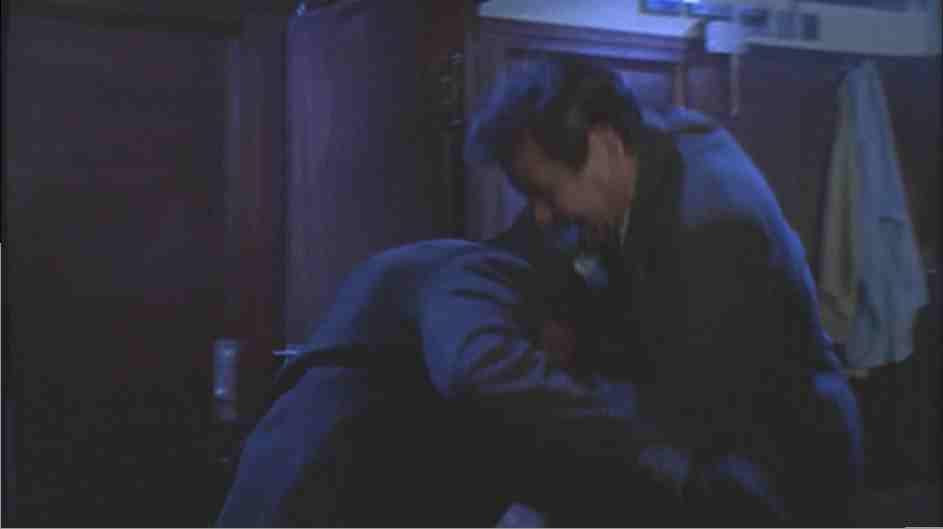


0 Comments:
Post a Comment
<< Home